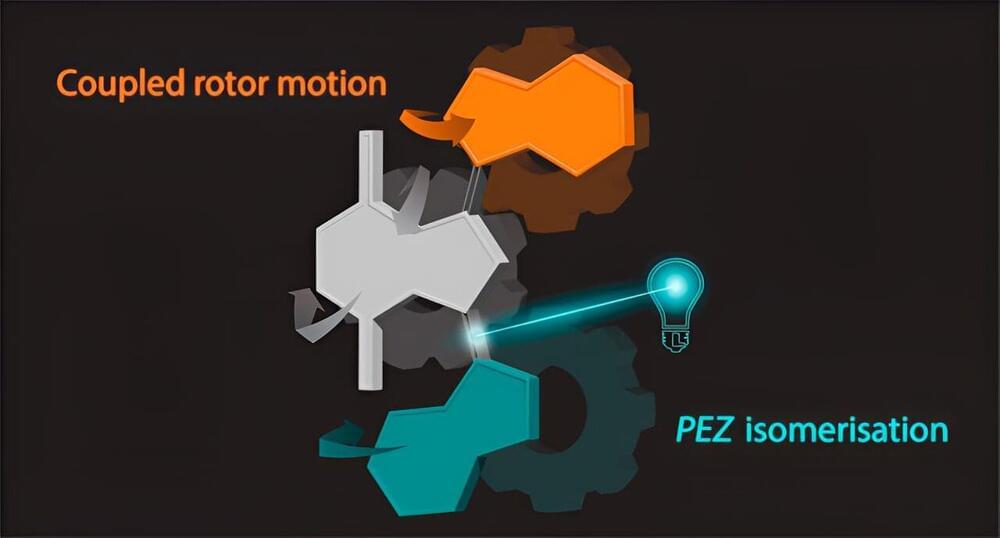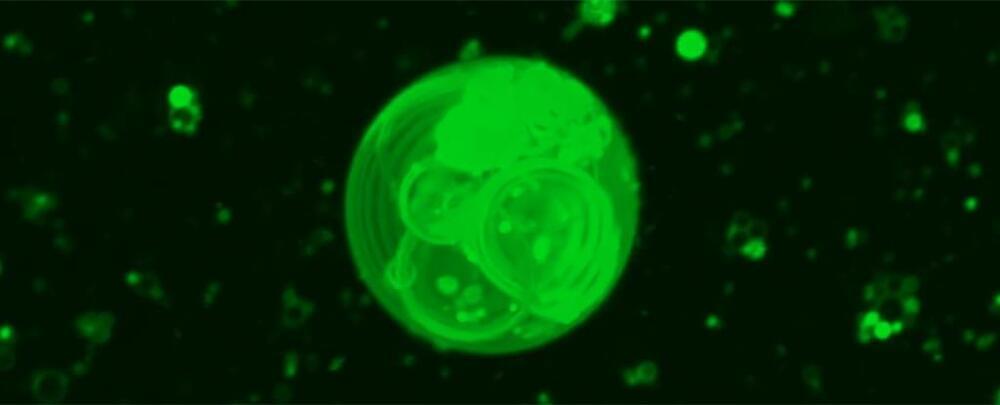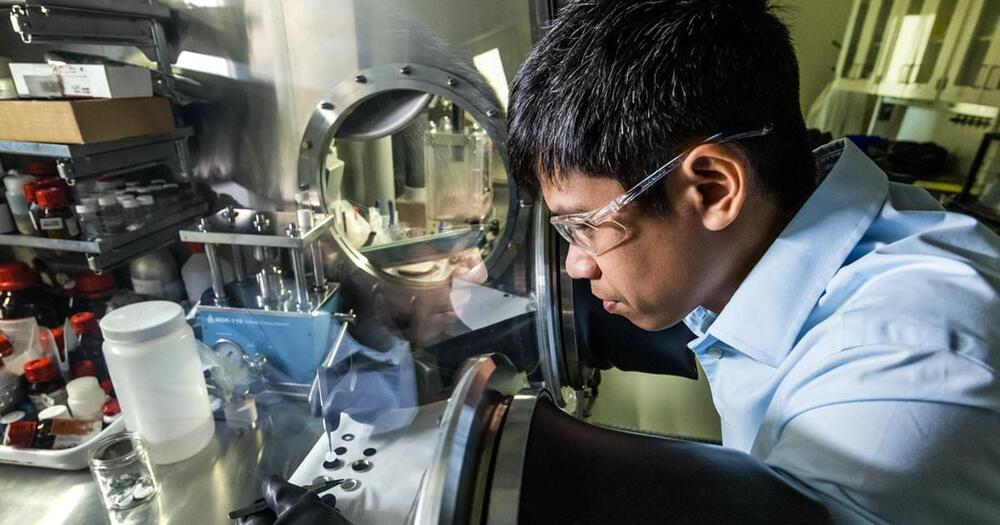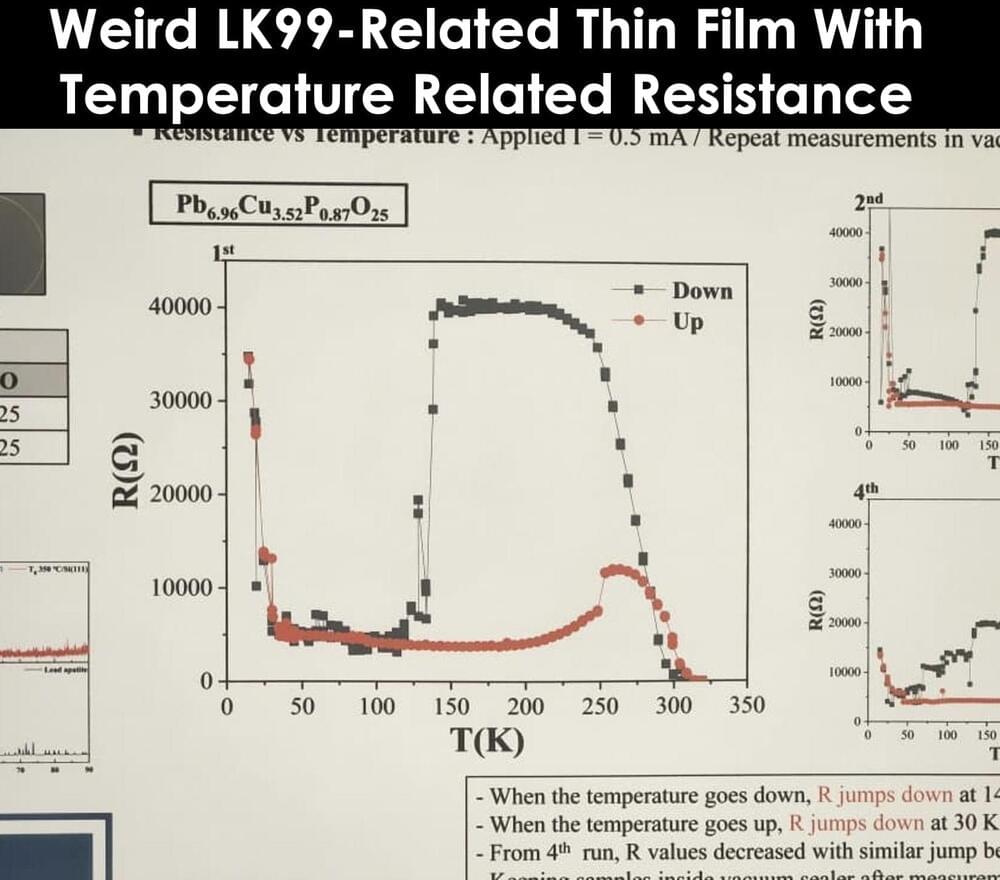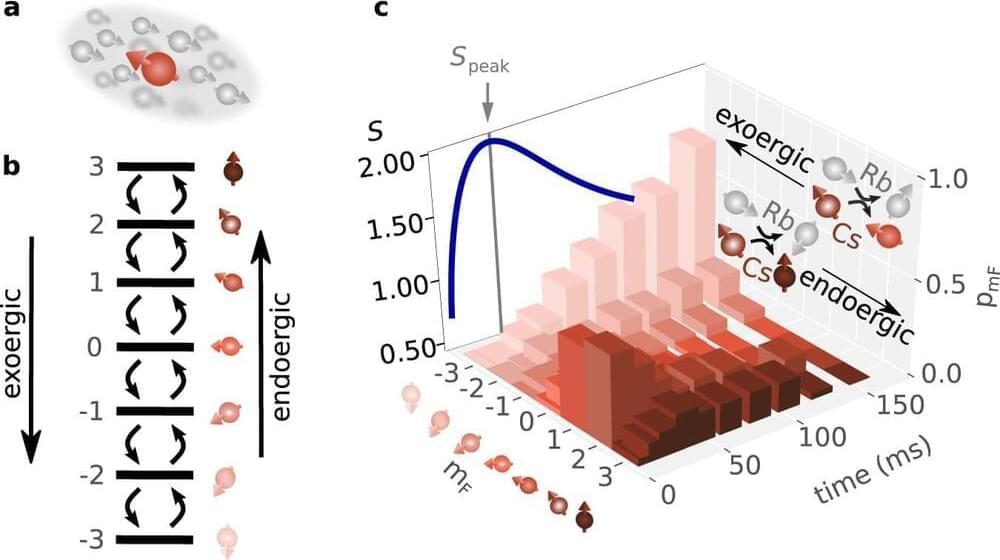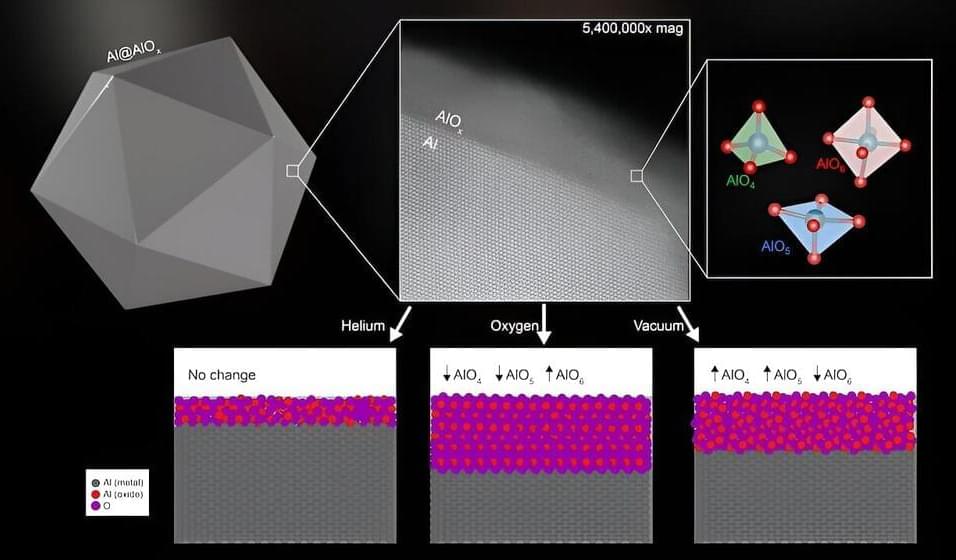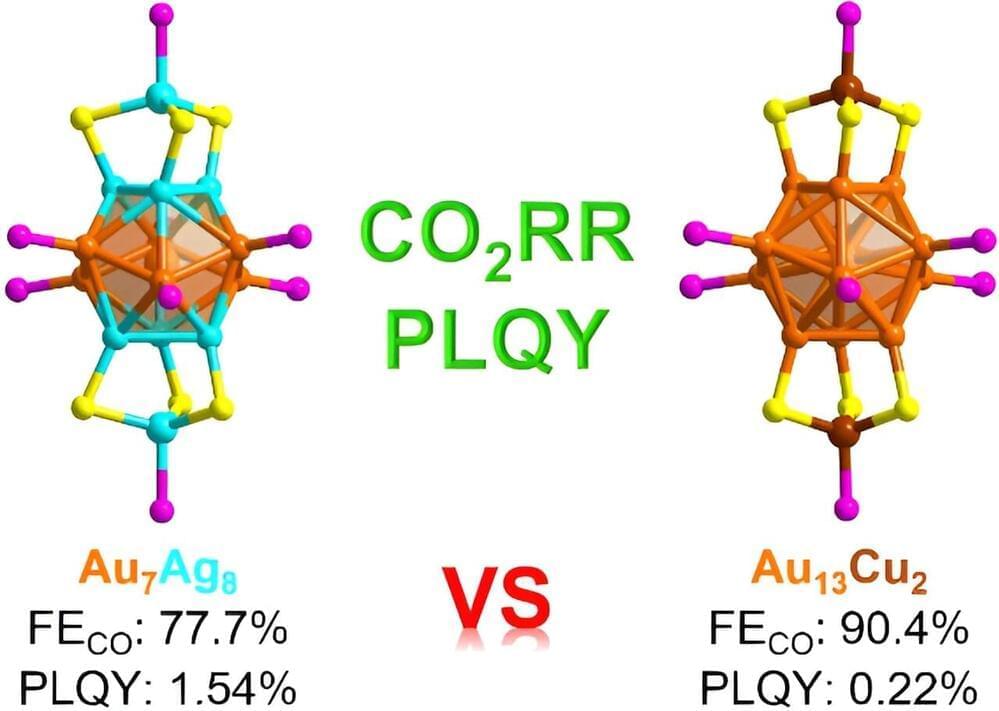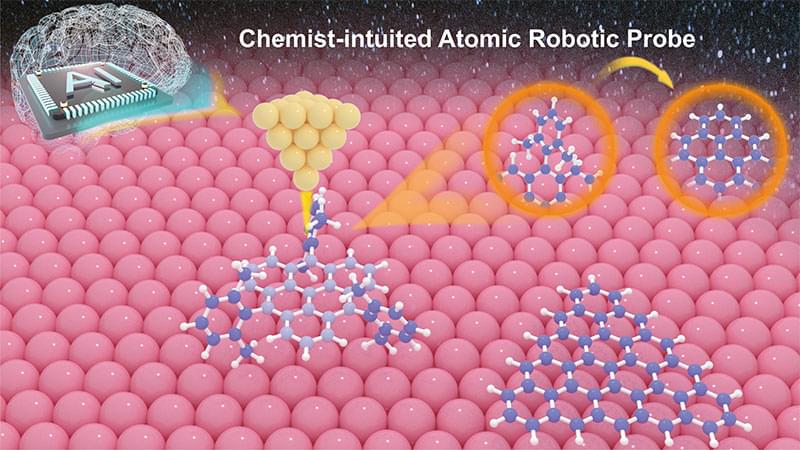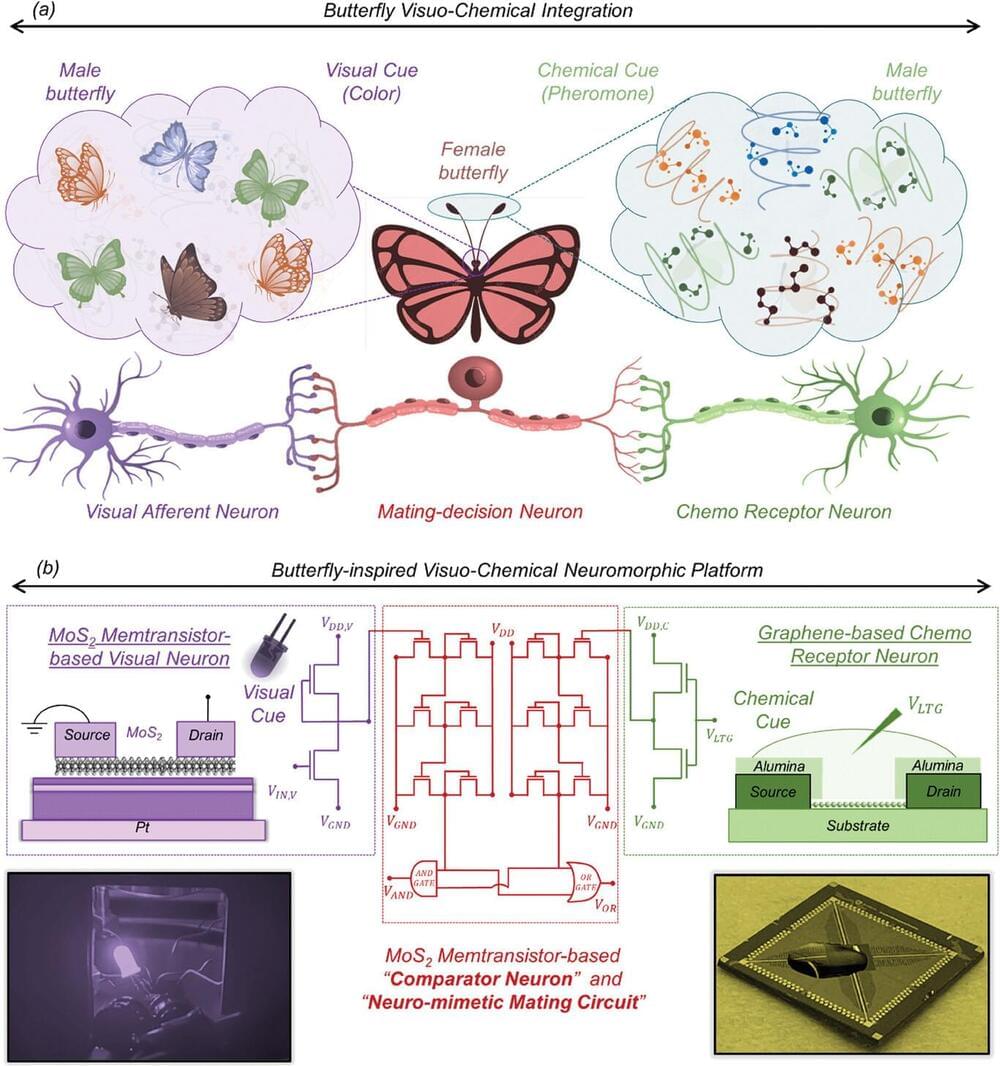Mar 9, 2024
Communication between rotors in molecular motor observed for the first time
Posted by Dan Breeden in categories: biotech/medical, chemistry, nanotechnology
A pair of chemists at the University of Groningen in the Netherlands, has observed communication between rotors in a molecular motor. In their study, reported in the Journal of the American Chemical Society, Carlijn van Beek and Ben Feringa conducted experiments with alkene-based molecular motors.
Molecular motors are natural or artificial molecular machines that convert energy into movement in living organisms. One example would be DNA polymerase turning single-stranded DNA into double-stranded DNA. In this new effort, the researchers were experimenting with light-driven, alkene-based molecular motors, using light to drive molecular rotors. As part of their experiments, they created a motor comprising three gears and two rotors and observed an instance of communication between two of the rotors.
To build their motor, the researchers started with parts of existing two motors, bridging them together. The resulting isoindigo structure, they found, added another dimension to their motor relative to other synthesized motors—theirs had a doubled, metastable intermediary connecting two of the rotors, allowing for communication between the two.
